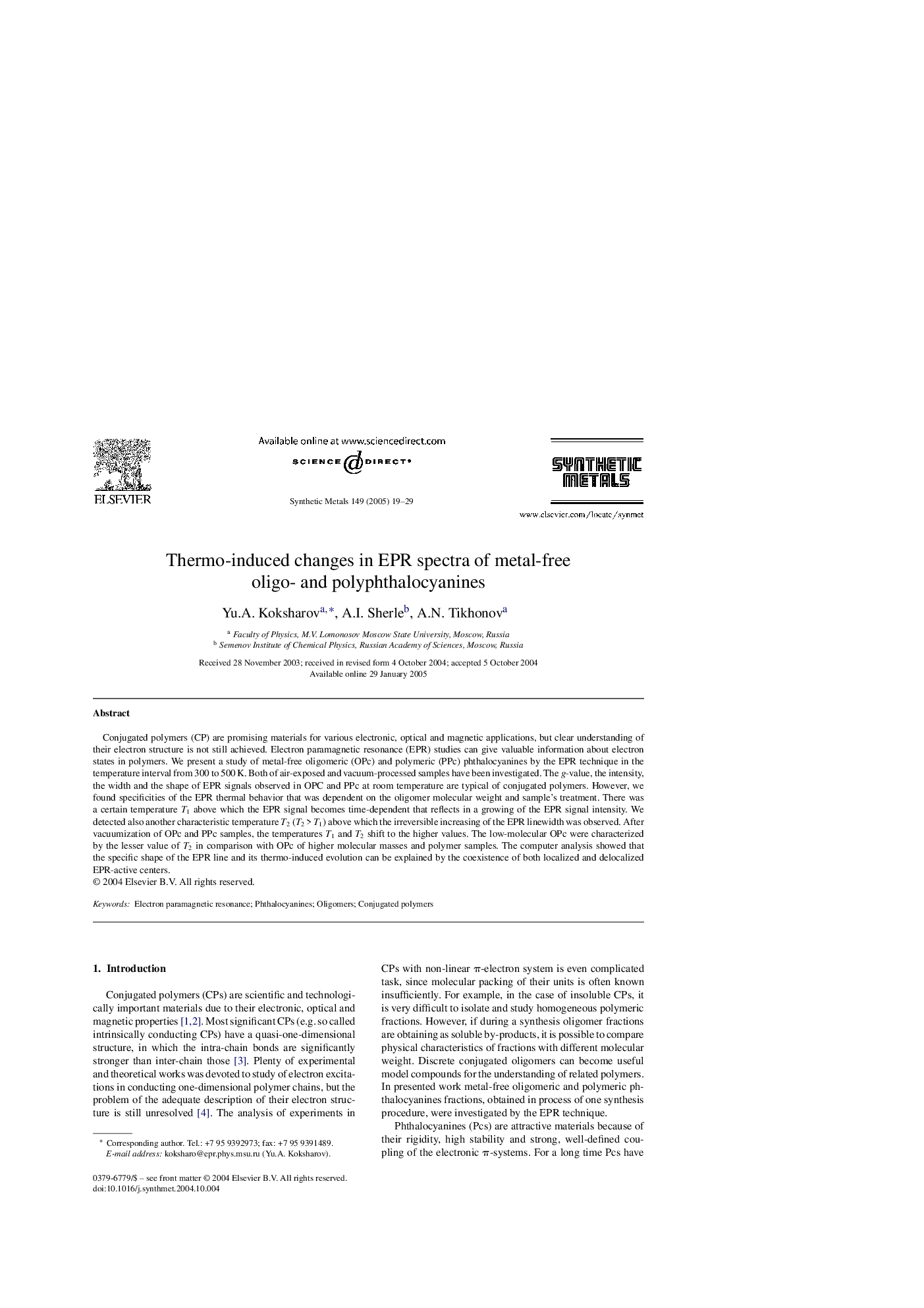| Article ID | Journal | Published Year | Pages | File Type |
|---|---|---|---|---|
| 10618683 | Synthetic Metals | 2005 | 11 Pages |
Abstract
Conjugated polymers (CP) are promising materials for various electronic, optical and magnetic applications, but clear understanding of their electron structure is not still achieved. Electron paramagnetic resonance (EPR) studies can give valuable information about electron states in polymers. We present a study of metal-free oligomeric (OPc) and polymeric (PPc) phthalocyanines by the EPR technique in the temperature interval from 300 to 500Â K. Both of air-exposed and vacuum-processed samples have been investigated. The g-value, the intensity, the width and the shape of EPR signals observed in OPC and PPc at room temperature are typical of conjugated polymers. However, we found specificities of the EPR thermal behavior that was dependent on the oligomer molecular weight and sample's treatment. There was a certain temperature T1 above which the EPR signal becomes time-dependent that reflects in a growing of the EPR signal intensity. We detected also another characteristic temperature T2 (T2Â >Â T1) above which the irreversible increasing of the EPR linewidth was observed. After vacuumization of OPc and PPc samples, the temperatures T1 and T2 shift to the higher values. The low-molecular OPc were characterized by the lesser value of T2 in comparison with OPc of higher molecular masses and polymer samples. The computer analysis showed that the specific shape of the EPR line and its thermo-induced evolution can be explained by the coexistence of both localized and delocalized EPR-active centers.
Related Topics
Physical Sciences and Engineering
Materials Science
Biomaterials
Authors
Yu.A. Koksharov, A.I. Sherle, A.N. Tikhonov,
